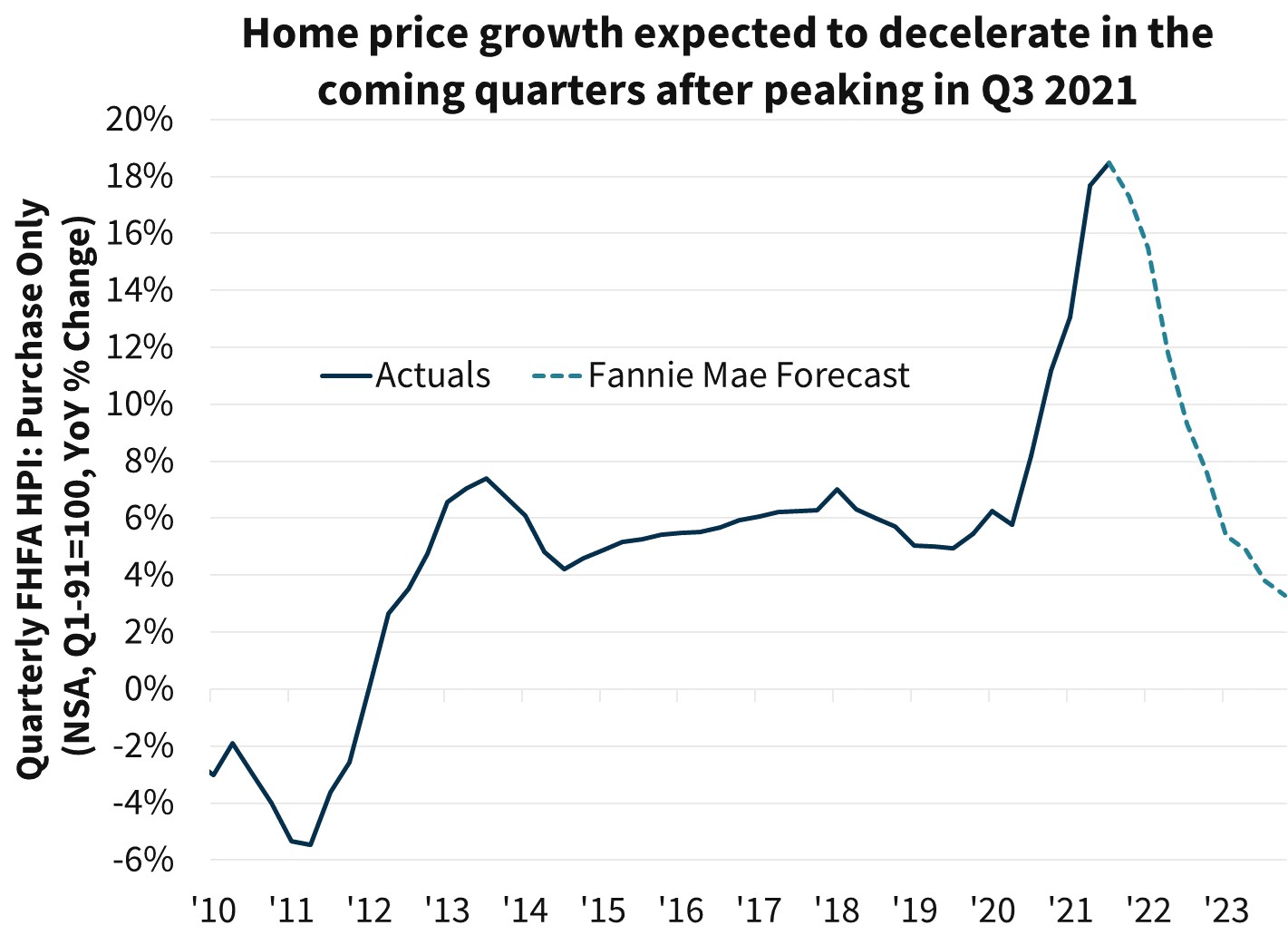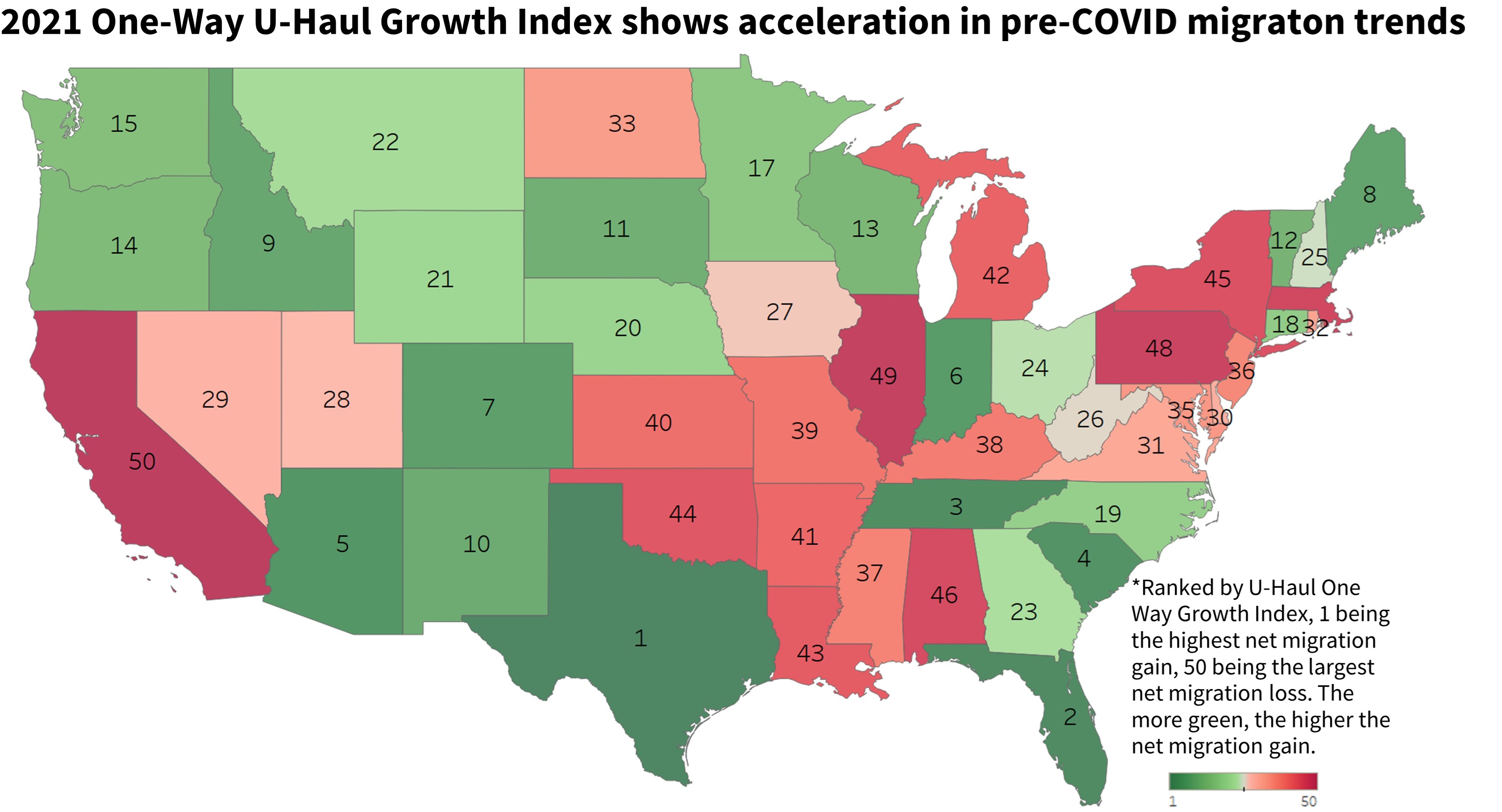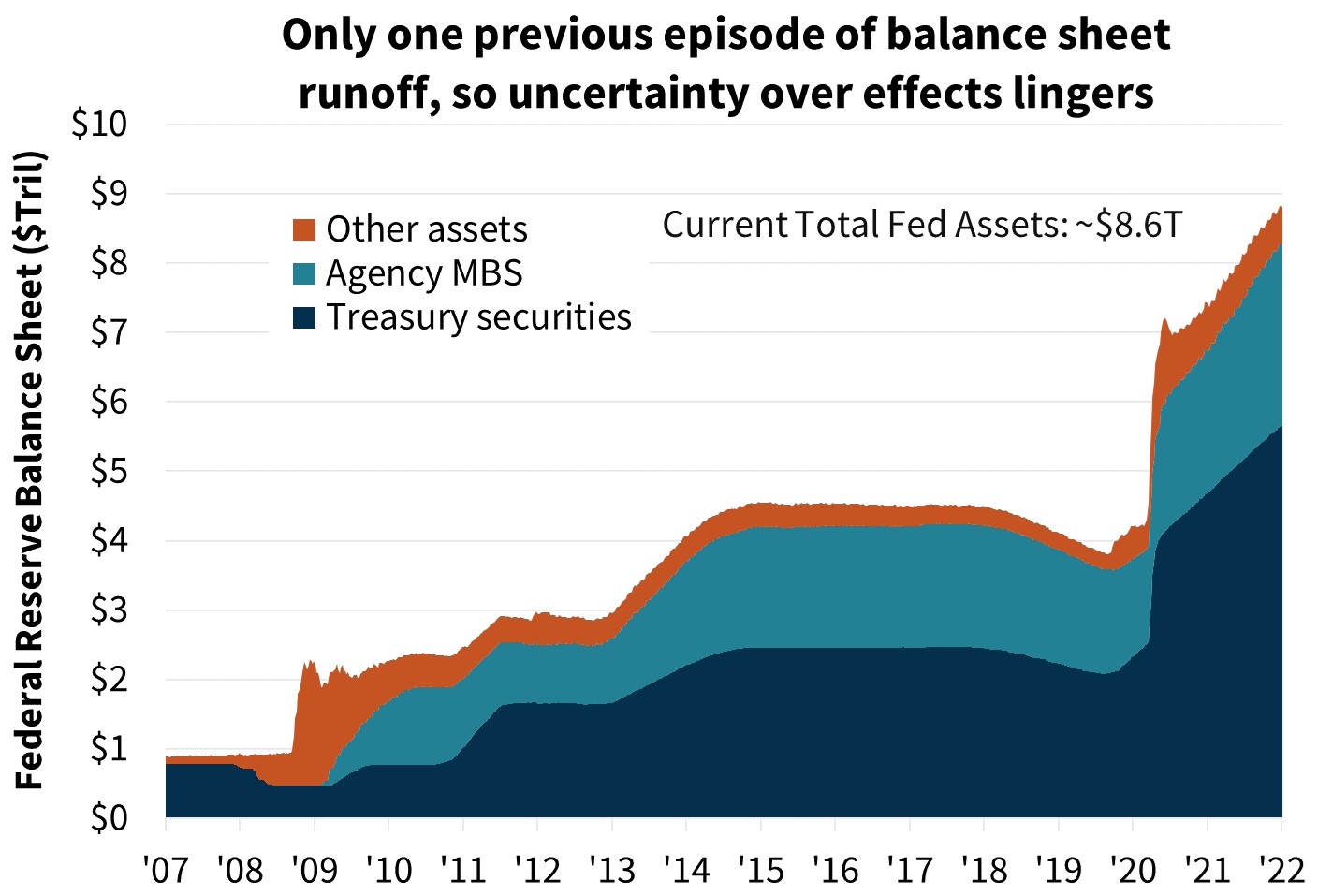Emergence of 'New Normal' Housing Market Begins
While it is too early to be certain that the COVID era is nearing its end, we expect the story of 2022 to be one of transition for both the economy and the housing market. Unprecedented market and policy responses stemming from the pandemic will gradually be replaced by more typical pre-COVID economic and housing patterns. However, this will still take some time and we don't expect a complete reversal. Some of the behavioral and structural changes from the past two years may prove to be long-lasting. The durability of changes in work, schooling, and housing arrangements is yet to be seen. Even though inflation is expected to eventually ease, a higher-than-pre-COVID range is forecast for the foreseeable future. Therefore, we describe this upcoming year as returning to a 'new' normal.
The unemployment rate is now below 4 percent, and the Federal Reserve is poised to begin policy tightening (we now expect the first rate hike to occur in March). Thus, the economy appears to be entering the mature stage of the business cycle, during which growth decelerates toward the long-run trend. Robust labor demand and the ample need for firms to continue rebuilding inventories suggests to us that economic growth will be solid in 2022, but the period of rapid recovery has passed. Additionally, while we expect improvement to supply chain difficulties, there are risks around the speed at which this occurs, the duration of continued high inflation, and policy maker and financial market reactions to these economic conditions. For housing, the past year's demand surge was driven by a combination of factors, including low mortgage rates, down payments supported by stimulus checks and other savings, and a pandemic-driven reshuffling of preferences and move timing on the part of many households, all of which are expected to wane. Furthermore, we expect the recent rapid house price appreciation and rising mortgage rates will lead to growing affordability constraints, dragging on home sales, but also likely limiting further price appreciation to a more sustainable pace.
Only modest changes have been made to our macroeconomic forecast since December’s outlook. We maintain our expectation of 2021 real GDP growth on a Q4/Q4 basis to have been 5.5 percent, the highest since 1984. For 2022, we expect a deceleration to 3.1 percent growth (down one-tenth), while our 2023 forecast remains unchanged at 2.2 percent. Recent inflation data has likewise been in line with our prior forecast, so related adjustments have also been modest. Our housing forecast has also been minimally changed; we expect total home sales to fall 1.2 percent in 2022 (from -1.4 percent last month), followed by a decline of 3.6 percent in 2023 (previously -3.8 percent). Our quarterly house price forecast was modestly upgraded but still represents a view of significant deceleration in prices. We now project 7.6 percent and 3.3 percent house priced growth for 2022 and 2023, respectively, as measured by the FHFA Purchase-Only Index. This compares to our previously projected rise of 7.4 percent and 2.9 percent.
We are assuming in the near term that the Omicron COVID-19 surge will have only modest and temporary economic impacts. The severity of the variant appears to be lesser than prior waves, and most high frequency economic indicators suggest a smaller change in consumer behavior compared to the 2020-2021 winter wave of COVID. The impacts are more likely to be felt in the supply side of the economy due to the sheer volume of cases, leading to a heightened number of workers calling out sick or needing to quarantine. This will likely delay somewhat further supply chain improvements and put additional upward pressure on inflation. However, based on the trajectory of cases abroad in some of the early outbreak areas such as South Africa and parts of Europe, we expect the U.S. wave to begin to pass in the coming weeks. Of course, there are risks to this assumption, as well as the possibility of new waves of future variants.
Housing Trends and Questions for the Year
As the post-COVID housing market reveals itself, we anticipate the following themes to emerge over the year, as well as answers to some large unknowns:
Affordability will increasingly limit home sales: This isn't to say that we expect a soft year for home sales in absolute terms. We forecast the sale of existing homes in 2022 to slow by only 3.2 percent from 2021, which would still represent the second fastest annual pace since 2006. Rather, we expect the narrative around housing this year to shift from one of extremely limited inventories leading to hypercompetitive bidding wars to one in which increasingly more would-be homebuyers are priced out of the market. We expect that rapid house price growth eclipsing gains in wages, combined with the waning effects of past stimulus checks and built-up savings, will make it increasingly difficult for many potential buyers. Our ongoing monitoring of MBS issuance data continues to show an upward trajectory in the average back-end debt-to-income (DTI) ratios of borrowers, particularly for first-time homebuyers, indicating growing affordability pressures on borrowers. This measure is likely soon to meet or eclipse the recent high recorded in 2018, which precipitated a notable slowing in home sales following a rise in mortgage rates. For now, there appears to be ample prospective homebuyers engaging in bids to facilitate sales even as some drop out of the market completely, but the amount will likely lessen as the year unfolds.

Home price growth will remain strong but decelerate: We expect the effects of worsening affordability to lead to a drag on home price growth. We still expect strong appreciation for this year as inventories currently remain very tight and measures of buyer traffic remain robust. Our expectation of 7.6 percent growth in 2022 is still considerably higher than the average pace of 5.4 from 2012 to 2019. However, this represents a large deceleration from 2021’s expected record house price growth of 17.3 percent.
More supply is coming… eventually: The total number of homes under construction, including both single-family and multifamily units, is the highest since 1973. Additionally, data on the number of lots being acquired and developed by homebuilders points to an increase in the total amount of homes likely to be made available for sale later this year. The problem, however, has been that supply chain disruptions and ongoing labor scarcity issues are delaying many projects from being completed. Many homebuilders continue to report purposely limiting sales orders due to their current inability to keep up with demand, while recent surveys continue to report heightened buyer foot traffic. Disruptions are expected to continue, especially considering the recent COVID wave, but we anticipate an increase in home deliveries and new home sales later this year. This should help alleviate some of the supply pressure in the currently tight housing market as both rental and existing ownership units are vacated for these new units.
For more on multifamily market conditions please see the January 2022 Multifamily Market Commentary.

Are COVID-related shifts in housing over? As we have discussed previously, we believe much of the surge in demand over the past year was due to many homebuyers moving up their plans to purchase a home. Taking advantage of low interest rates and in many cases work-from-home arrangements, many households pulled forward their moving plans. This initially was driven disproportionately by higher-income renters leaving denser urban areas to become first-time homeowners, but then broadened over time. A wave of early retirements in the wake of COVID, reflected in the now-lower labor force participation rate among older cohorts of workers, likely accelerated many moving plans as well, especially in the Sunbelt and other popular retirement locations. In part, migration patterns evident pre-COVID were accelerated. Successive waves of stimulus checks and rise in savings also helped facilitate down payments, and over the past quarter, survey evidence published by Redfin suggests that many buyers have rushed to get ahead of rising mortgage rates. We expect these drivers to wane moving forward, leading to a progressively softening pace of sales in coming quarters. However, it’s unknown to what extent the reshuffling becomes a longer lasting phenomenon. As households reassess new working, living, and schooling arrangements, there may be a continued level of re-sorting between urban and suburban areas, as well as broader regional migration shifts leading to a heightened level of home sales.
Relatedly, there is also risk that some of the hottest metro areas of this past year have overheated and will experience at least modest price declines over the next year or two as many of the above-mentioned temporary factors unwind. Metros such as Boise City and Austin, which have seen rapid price appreciation through Q3 of 2021 of 43.8 percent and 37.2 percent, respectively, since Q1 2020 are examples where there may be declines. Historically, it is not uncommon for significant regional variation in house price growth to occur when structural shifts in the economy develop, such as oil boom and busts or the post-Cold War aerospace and defense industry shocks. In the case where national house price growth is expected to be decelerating, some of these changes can lead to regional price declines. We don’t foresee potential regional home price declines to be of serious concern for the macroeconomy, but nonetheless we believe meaningful regional house price risk exists for some metros.

How durable is investor demand? One recent trend has been a shift in home sales from a heightened level of first-time homebuyers to a higher share of investor and cash purchases. This is especially true in certain hot markets. Interest in single-family rental properties has grown this past year as rental vacancy rates are at historical lows and rent growth has been strong. A recent report from Redfin estimates that 18.2 percent of single-family sales in Q3 2020 were by investors, up from 11.2 percent a year prior. The big question in our view is "how durable is this demand?" The long-run lack of housing supply would suggest some stability for investor demand, but much of this activity is potentially "hot" money taking an outsized interest in residential real estate due to low-yielding alternative investments and the current low-cost of leverage. If interest rates continue to move up meaningfully and economic activity decelerates, investor demand for housing could quickly reverse, leading to slower house price appreciation, and perhaps a slower sales pace. A potential shift could, however, decrease market competition for first-time buyers and potentially ease affordability constraints.

Monetary Policy Tightening as Inflation Remains High
There are significant uncertainties around the path of the macroeconomy and interest rates. With inflation measures continuing to come in strong (the CPI for December 2021 hit 7 percent on an annual basis, the highest since 1982), the Fed has increasingly suggested a move towards a swifter pace of policy tightening. We now expect the first of three rate hikes this year to occur in March (previously we had expected a June start), though recent comments from Fed officials, such as St. Louis Fed President Bullard, suggest upside risk of four hikes. Additionally, the minutes from the December Federal Open Market Committee (FOMC) meeting showed participants raising the possibility of not simply tapering asset purchases, as is currently outlined, but an outright shrinking of the Fed's balance sheet, potentially not too long after the first interest rate hike. Given that the prior business cycle was the only example of balance sheet runoff ever occurring, it is unclear what the precise interest rate and macroeconomic effects of doing so would be. The minutes from the December FOMC meeting stated that participants judged that "changes in the target range for the federal funds rate should be the Committee’s primary means for adjusting the stance of monetary policy" as "there is less uncertainty about the effects of changes in the federal funds rate on the economy than about the effects of changes in the Federal Reserve’s balance sheet." However, if inflation pressures remain robust, the Fed may feel compelled to act more aggressively. As such, there is a plausible argument for greater mortgage rate increases than we currently project if the eventual unwinding of assets puts upward pressure on Treasury yields and MBS spreads, especially given that a few FOMC members were also concerned about a relatively flat yield curve. Alternatively, if financial markets begin to worry about the risk of economic growth slowing too greatly and leading to an eventual recession, mortgage rates could remain near current lows or even decline further. Such a scenario would obviously impact our home sales, prices, and mortgage originations forecasts.
Our forecast process is such that the interest rate projection was completed at the end of December, prior to the most recent increases in the 10-year Treasury rate (1.72 percent as of this writing, up from 1.52 percent on December 31). As such, there is upside risk to our published interest rate forecast. According to Freddie Mac, also as of this writing, the 30-year mortgage rate averaged 3.22 percent for the week ending on January 6, 11 basis points higher than at the end of December, and we expect additional rises in the near-term given the recent movement in Treasuries. The historical relationship from the end of the Great Financial Crisis up until the COVID outbreak was that a 100-basis point change in the 30-year mortgage rate over the course of a year was associated on average with about an 8 percent shift in existing home sales, with a one-to-two quarter time lag. As such, we could expect home sales to be about 1 to 2 percent lower than our published forecast over this next year if the recent rate increase holds. However, there is significant historical variation around this simple relationship stemming from the drivers of such rate changes. If rates rise due to stronger consumer and investor confidence pertaining to the growth of the economy, then the same growing demand driving interest rates higher will also support home purchases, partially mitigating any negative effects on sales from higher rates. However, if interest rates are readjusting due to new expectations over long-run inflation or a shift in monetary policy, then the effect could be larger. Our next forecast will of course incorporate formally any recent interest rate changes.
Lower Mortgage Originations on Likely Higher Rates
Our forecast for purchase mortgage origination volumes for 2021 was revised downward slightly based on incoming data. However, our forecast of future growth has been revised upward, predominantly due to our modestly stronger expectation for home price appreciation. In particular, 2022 purchase volumes are now expected to be $2 trillion, an upward revision of $17 billion from last month's forecast. Purchase volumes are expected to grow to $2.1 trillion in 2023, $27 billion higher than the previous forecast.
Our forecast for refinance originations also had minor revisions relative to last month. Based on incoming data, we have revised upward 2021 refinance volumes by $5 billion relative to last month. Based on a slightly higher interest rate expectation, which outweighs the more optimistic home price growth forecast, we have revised downward our forecast for 2022 refi volumes by $25 billion to $1.3 trillion. Our 2023 forecast is essentially unchanged from last month at $1.1 trillion, as the impact from stronger home prices and higher interest rates are projected to offset each other. At the current mortgage rate of 3.22 percent, we estimate that about 32 percent of outstanding mortgage balances have at least a 50-basis point incentive to refinance.
However, the recent jump in interest rates leads to some downside risk to our originations forecast. Based on more recent data, we estimate the mortgage rate could be approximately 20 basis points higher over the forecast horizon. We estimate that purchase volumes under such case could be about 2 percent, or $33 billion lower in 2022, all else equal, and that refinance volumes could be about 10 to 15 percent lower in 2022.
Economic & Strategic Research (ESR) Group
January 12, 2022
For a snapshot of macroeconomic and housing data between the monthly forecasts, please read ESR’s Economic and Housing Weekly Notes.
Data sources for charts: Federal Housing Finance Agency, U-Haul, Core Logic, MRS Securitization Disclosure Data, Federal Reserve, Fannie Mae ESR Analysis.
Opinions, analyses, estimates, forecasts and other views of Fannie Mae's Economic & Strategic Research (ESR) Group included in these materials should not be construed as indicating Fannie Mae's business prospects or expected results, are based on a number of assumptions, and are subject to change without notice. How this information affects Fannie Mae will depend on many factors. Although the ESR group bases its opinions, analyses, estimates, forecasts and other views on information it considers reliable, it does not guarantee that the information provided in these materials is accurate, current or suitable for any particular purpose. Changes in the assumptions or the information underlying these views could produce materially different results. The analyses, opinions, estimates, forecasts and other views published by the ESR group represent the views of that group as of the date indicated and do not necessarily represent the views of Fannie Mae or its management.
ESR Macroeconomic Forecast Team
- Doug Duncan, SVP and Chief Economist
- Mark Palim, VP and Deputy Chief Economist
- Eric Brescia, Economics Manager
- Nick Embrey, Economist
- Nathaniel Drake, Economic Analyst
- Richard Goyette, Economic Analyst
- Rebekah Gutierrez, Financial Analyst
